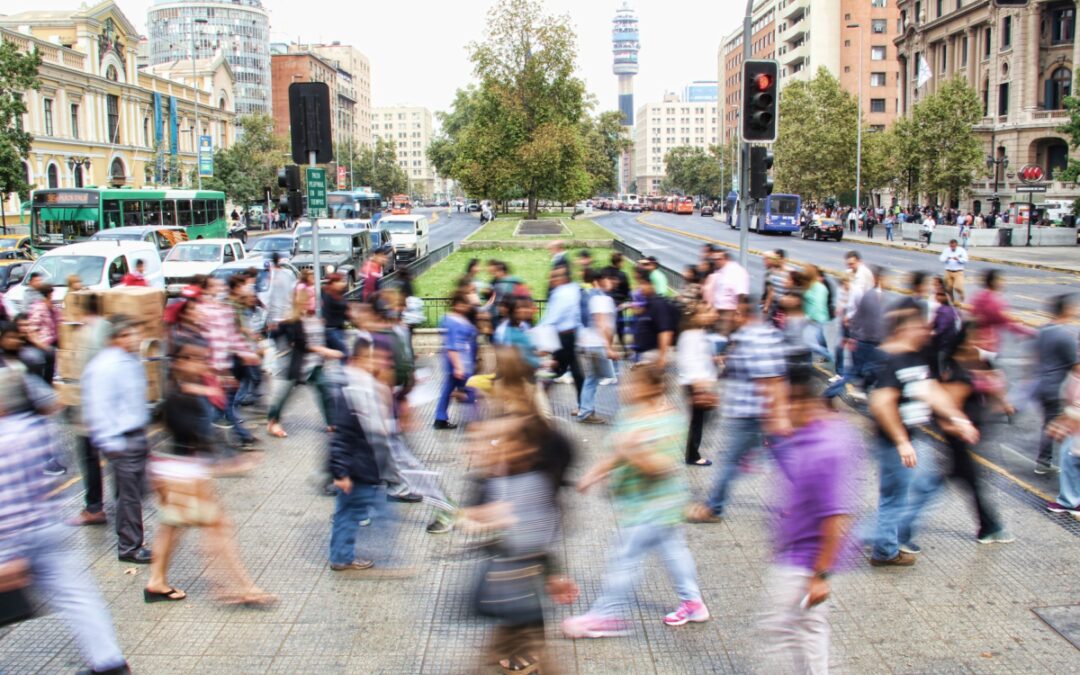As an urban studies major I was always interested in the structure of cities and how we use space. The concept of walking cities has been around for a long time and it lends itself to the vibrancy of communities. It brings us back to the structure of most communities that are over 100 years old. Then the car came and everything changed, but that’s another story. Fast forward to today and the concept of walking cities has a new label with a slight twist – 15-minute cities. Pretty catchy right?
A 15-minute city is a concept for urban planning and development in which cities are designed to be compact and walkable, with amenities such as housing, schools, healthcare, stores, and parks all within a 15-minute walk or bike ride from a resident’s home. The idea is to reduce the need for long commutes and car trips, making it easier and more convenient for people to access the resources and services they need in their daily lives. The concept has gained popularity in recent years as a way to address urban sprawl, traffic congestion, and environmental concerns.
15-Minute Cities
Wouldn’t it be nice if most daily necessities and services can be easily reached by a 15-minute walk or bike ride from any point in the city? Currently, less than 3% of the U.S. population walks to work. This approach is intended to reduce car dependency, promote healthy and sustainable living, and improve the overall quality of life for city dwellers. However, the concept has been criticized for its unrealistic expectations and potential negative impacts on housing development and cost.
The concept has strangely gotten mired in conspiracy theories about restricting people’s movements to within 15 minutes of where they live. That’s not what this is about. Like many ideas, some people may take it too far in the wrong direction and turn it into something that it was never meant to be. So we aren’t going to go there.
While the concept of the 15-minute city may not be new, its implementation in the 21st century requires new approaches and technologies. This includes the use of data and digital tools to better understand and plan for the needs of residents, as well as the integration of sustainable infrastructure, such as green spaces and renewable energy sources.
The 15-minute city also requires a shift in mindset, from one focused on individual gain to one focused on the common good. This means prioritizing the needs of the community over those of developers and investors and recognizing the importance of equity and inclusion in planning. The concept doesn’t just apply to cities either.
Going Remote
Most rural communities originally embodied many of the principles of 15-minute cities because they were designed before cars. As jobs moved to cities and people started using cars, the patterns of interaction and availability of services changed. This resulted in the decline of many rural communities. Like with many trends, the pendulum eventually swung back. Remote work has created new opportunities in rural communities.
The concept should be treated sort of like the pirate code (from Pirates of the Caribbean) – more of a set of guidelines. Walking isn’t always realistic in a more rural setting, but thinking about services within a 15-minute drive is still a good goal. Last year we moved from a suburban bedroom community to a more rural community that had originally been a mill town. The mill is long since closed but the town infrastructure is still here. It’s a little underutilized, but people are starting to come back. Between various farming initiatives and those of us remote workers, we can take advantage of all the community has to offer without worrying about the commute.
For me, I’m a little beyond walking range, but within about a 5-10 minutes drive I have:
- Good pizza
- Excellent Chinese
- a nice brewery
- Multiple performance venues
- More maple syrup than humans should be allowed
- Delicious bakery items
- hiking trails
- Kayaking
- farm to table options
- Hospital
- Major shopping chains
- Art galleries
Come and They Will Build It
Build it and they will come only really worked in the movie Field of Dreams. Flipping that around may be closer to the truth. As remote workers move into more rural communities they set the stage for new services within that 15-minute range. Remote workers are more likely to consume locally compared to their commuting counterparts. Pre-pandemic the average commute in the U.S. was about 30 minutes. With more people opting for a 0-minute commute, they are looking for services closer to home. This helps build more sustainable communities. It doesn’t happen overnight because it is a symbiotic relationship. There has to be a market to sustain the supporting services. Luckily operating remotely can help the businesses themselves because they may not be sustainable by their local economy alone.
Communities that otherwise might have lost services like doctors, therapists, yoga instructors, etc. can retain them when they can offer remote services. It does take some planning on both sides. Communities need to attract residents that have work location flexibility and help local businesses expand their reach so they can remain integral parts of the community. It would be great if all communities, both urban and rural could be self-sustaining, and offer all the services that are needed within 15 minutes. It makes for better economies, a better quality of life, and a healthier planet.
Where to Next?
Between remote work, micro-grids, 3D printing, 5G, vertical farming, EVs, farm-to-table, the sharing economy, and a few other trends, we are getting closer to 15-minute communities. We will never get all the way there and that’s ok. Closed communities create isolationism. Sustainability and connection is the goal. We want communities where we have most of what we need right where we are. For most of us now working remotely, years of commuting have taught us the same lesson Dorothy learned in the Wizard of Oz. There’s no place like home.



